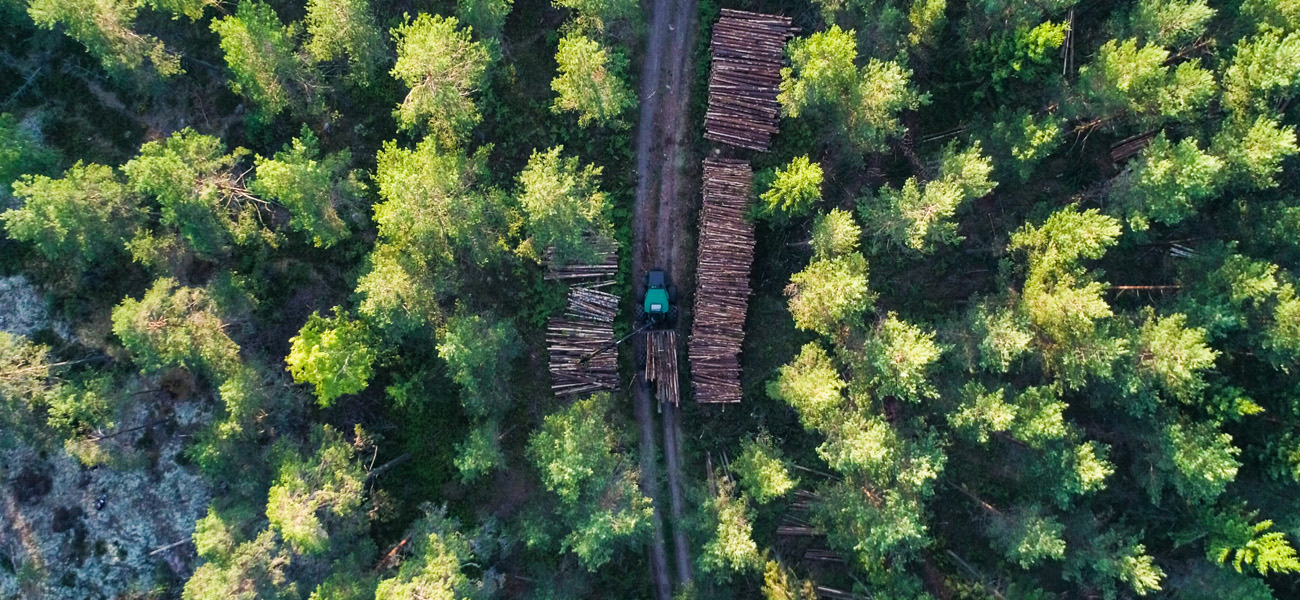At a glance:
- Natural capital - the economic value of goods and services provided by our ecosystems - is emerging as a crucial new investment product.
- Natural capital markets, including carbon markets and emerging markets like Biodiversity Net Gain (BNG) credits, are gaining traction globally.
- BNG is emerging as an important policy approach to create and improve natural habitats through ensuring new developments have a positive impact on biodiversity.
The rise of natural capital investments
Nature provides us with valuable services, which we can easily overlook and undervalue. The value supplied by natural systems has been considered free and off-balance sheet and until recently, it has rarely been properly valued.
But that could quickly change. As climate events continue to leave our natural systems increasingly stressed and tested, we will be left with new costs and uncertainty, as we try to recreate what nature provided for free. Economists and policy makers are increasingly referring to the value of nature now as a form of capital because this “natural capital” supports economic prosperity in similar ways to the “financial capital” that is traded on Wall Street.
Capital investment and accounting systems are adapting to include the value of natural assets and capture the links between the health and resilience of nature. This increasing appreciation of natural capital has led to the creation of comprehensive risk management strategies, and holistic accounting standards to improve investment decisions, and is supported by international frameworks which promote transparency, such as the Taskforce on Nature Related Financial Disclosures (TNFD).
Natural capital is an approach that can help answer questions such as:
- How can natural resources and ecosystems be best managed to minimize business disruptions?
- What is the contribution of ecosystems and their services to the economy, social wellbeing, local job security, and improved livelihoods?
- What is the condition and integrity of local ecosystems, and how is the health of the biodiversity changing over time? Where are the main areas of degradation, adaptation, and enhancement?
- What are the trade-offs and opportunities among different land uses that complement habitat conservation, recreation, and enjoyment to achieve long-term sustainability and equity?

How is natural capital defined?
Natural capital can be defined as the planet’s stock of natural assets, both living and non-living. These assets all provide value through the goods they produce or services they provide, known as ecosystem services. According to the United Nations:
"Natural capital is another term for the stock of renewable and non-renewable resources (e.g. plants, animals, air, water, soils, minerals) that combine to yield a flow of benefits to people."
The concept of natural capital extends beyond nature as a source of raw materials for production (e.g. timber) to include the role of the environment and ecosystems in supporting human well-being through the supply of such important goods and services as clean water, fertile soils and valuable genetic resources.
Natural capital is now known as one of five capital considerations for any sustainable project. This also means that when we assess the value of a project, we must evaluate the impact (+/-) that investment decision may have on the planet’s stock of natural capital, alongside consideration of the other capitals.
Why are we talking about this now?
We are at a tipping point, as the U.S. alone now experiences, on average, a billion-dollar weather or climate disaster every three weeks. A 2023 analysis identified that over half (55%) of the world’s GDP is moderately or highly dependent on nature – and put the value of that dependency at $58 trillion. This is coupled with rising pressures to restrict global warming and exacerbated by significant global biodiversity loss, which has averaged 68% from 1970s levels and is as high as 94% in Latin America.
Within commercial real estate, the concept of biodiversity net gain (BNG) - creating more nature resulting from development than exists currently - is also becoming a value driver for sites and buildings across the world. This regenerative practice is creating alternative land use opportunities and attracting capital investment.
BNG has also caught the eye of regulators and is now a mandatory requirement for gaining planning permission to develop real estate and infrastructure in England. This will enhance biodiversity over time and create opportunities for landowners and building owners to support implementation of the regulations by creating investment opportunities, via off-site nature credits. This market is only necessary where the required biodiversity gain is difficult to deliver through on-site development such as city centres or industrial corridors.
Landowners and developers are entering BNG contracts where both parties are obliged to support the maintenance of biodiversity credits for a minimum of 30 years. This will ensure that the level of biodiversity will remain above pre-development levels for a sustained period. These credits can incorporate a co-location of assets such as renewable energy generation or regenerative agriculture. 3rd party stakeholders can also invest into projects such as forestry protection, rewilding or peat restoration, providing alternative sources of capital and income to land and real estate owners.
Beyond England, the U.S., Canada, and Australia are launching a new initiative called the Partnership of Cooperation on Natural Capital Accounting, Environmental-Economic Accounting, and Related Statistics that will help decision makers account for the full value of nature when making plans and policies. The intent is to develop a common approach to Natural Capital Accounting, Environmental-Economic Accounting, and Environmental-Economic Statistics that is guided by the U.N. System of Environmental-Economic Accounting (SEEA) framework.
What are some examples of natural capital markets?
Some of the most established natural capital markets are carbon markets – the markets that facilitate the sale and purchase of credits for carbon emissions. As countries around the globe are aiming to meet ambitious decarbonisation targets, capital injections from companies and individuals have rapidly increased, with investment rising 365% in just four years, to €865 billion ($911.5 billion USD) in 2022. Beyond carbon markets, we are seeing new natural capital markets emerge across geographies.
| Geography | Natural Capital Market Case Study |
| England | In England, an emerging market is the Biodiversity Net Gain (BNG) credit market. While in its infancy, BNG credits are currently in a value range typically from £20,000 - £40,000 and can reach higher values for rare and species rich natural resources, such as peat lakes. This signals significant financial returns for landowners depending on the type of natural capital they possess. These investment markets not only provide excellent offsetting opportunities but, could also mitigate global biodiversity loss. However, this approach is not without its challenges, incentivising landowners to protect “their” natural capital can be difficult, due to the competing nature and diverse structures of land use, ownership and future land development pressure. There is also the real unprecedented threat of biodiversity loss due to wildfire, drought, storm events and flooding which is often out of the landowner’s control and is somewhat of a paradoxical risk to this model. |
| EMEA | The European Investment Bank (EIB) has developed a Natural Capital Financing Facility (NCFF), where investors can support sustainable initiatives such as the Irish Sustainable Forest Fund (SLM Silva Fund). The EIB provided a €12.5m equity contribution to aid the SLM in their continuous cover forestry practices, which maximise biodiversity net gain. The EIB plan to sell their key investment in the medium term, when the SLM will have surpassed a break-even point. This investment will therefore have achieved both environmental and financial gain for the planet and investors respectively. The EIB have also loaned €6m to Rewilding Europe Capital (REC), a microfinance NGO institution. This loan has been distributed to multiple nature-focused businesses including wetland restoration projects. These initiatives subsidise landowners to rewild their land, which in turn provide ecosystem services such as sediment prevention and increased water quality. If such loans were to be given to infrastructure companies, such as hydropower plants, financial modelling shows that the initial loan will be paid back through significant reductions in annual maintenance costs. |
| North America | A growing interest in establishing stormwater (volume) credit trading in the United States continues to gain traction. Post-construction stormwater credit trading provides flexibility for property owners and developers subject to post-construction stormwater management requirements. Stormwater credit trading encourages private property owners, who need to manage stormwater, but may not have the capacity to do so on their site, to purchase volume “credits” from other property owners that have implemented nature-based green stormwater infrastructure solutions beyond what their asset requires in the same region. The City of Grand Rapids, Michigan was one of the cities in the USA to launch a program of this kind in 2023. |
Why does this matter for CRE?
Those serious about natural capital markets truly believe they provide significant opportunities to generate stable financial returns and positive sustainability outcomes. In the U.K., 63% of investors want fund managers to focus on natural capital and biodiversity engagement, surpassing the percentage for climate related investments. These sustainable investment products do, however, require diligent frameworks to build trust in the market. Leading global investors have spotted the opportunity in natural capital by shaping investment products attractive to the capital markets. Investors can diversify their risk through land-based investments, which has historically been a much more resilient market compared to certain real estate assets.
The inclusion of natural capital in the five-capital considerations for sustainable projects reflects a holistic approach to evaluating investments. Real estate, currently faced with supply chain constraints and escalating costs, must now begin to prioritize natural capital to avoid rising insurance premiums and lost investment opportunities. The emergence of natural capital markets, such as carbon, stormwater and Biodiversity Net Gain (BNG) markets, presents potentially lucrative opportunities but also highlights challenges through landowner incentivization and complexity in implementation.
As a significant portion of the world's GDP is dependent on nature, nourishing natural capital is paramount. This shift towards valuing natural capital not only aligns with climate goals but also holds the promise of significant economic opportunities, societal benefit, and job creation.
This article is part of our 2024 Drivers of Change series where we explore the factors impacting our cities and places, and propelling us forward to adapt, learn and take advantage of the opportunities they present. See all the 2024 Drivers of Change or subscribe to be notified when new Drivers of Change are released.

